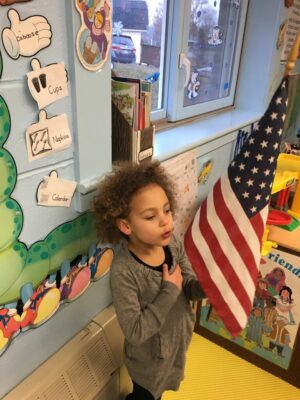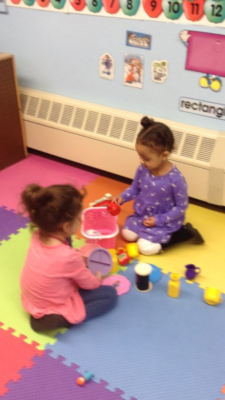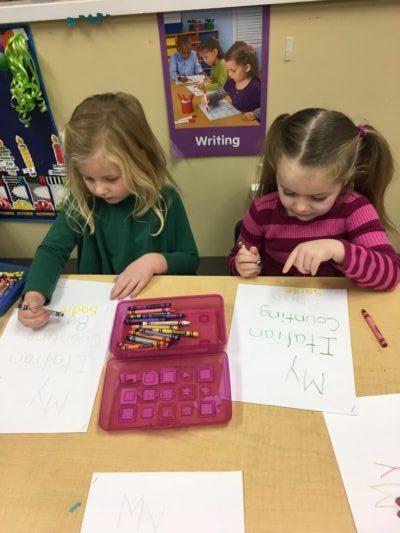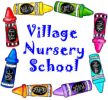What is the curriculum?
2 The Two’s program is an opportunity for caregivers to participate in an introduction to school class with their child. Free Play, crafts, songs and movement, and snack are part of each class. Focus is on building relationships with other parents/caregivers and promoting socialization for your two-year old. This program runs October through June.
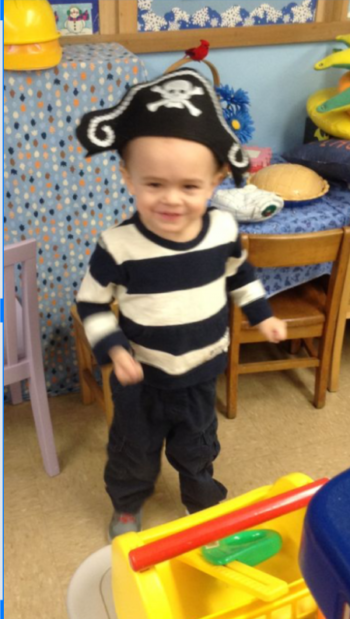
3 The Three’s program focuses on socialization, following directions, separating from parent, acting as a group, simple rules of kind behavior, sharing, playing with others, and taking turns. Basic monthly themes of color, shape and holidays dovetail with 4’s program.
4 The Four’s program continues with a thematic unit approach building upon prior knowledge with more activities, more responsibilities, preparing for Kindergarten with pre-reading, pre-writing and math skills! Students will also learn about various cultures of the world, participate in the Handwriting without Tears early literacy program and delve into process-oriented art exploring various mediums and artists.
How do you balance structure and choice? Balance is the key term in this question. Young children need clear and consistent structure in order to feel secure in their explorations, but they also need variety and choice in order to learn broadly and be creative. We begin each year with explicit discussions and demonstration of the daily routines in each classroom and behavior expectations that are consistent throughout our school. Children practice these until they are comfortable and essentially automatic so that they can devote their full attention and energy to the actions and interactions that will facilitate their development more deeply. During much of the day, children are invited to choose among a wide range of engaging activities at our learning centers. At other times, all the children participate in the same activity at the same time. For example, an educator leads circle time for the whole group, organizes a large motor activity for everyone, serves snack to the entire class, or takes the group to visit another area of the building or playground. Even during these whole group activities, children are invited to contribute their unique perspectives. This balance between structure and choice, together with explicit instruction initially and responsive feedback from educators, helps to prepare the children for school and life.
